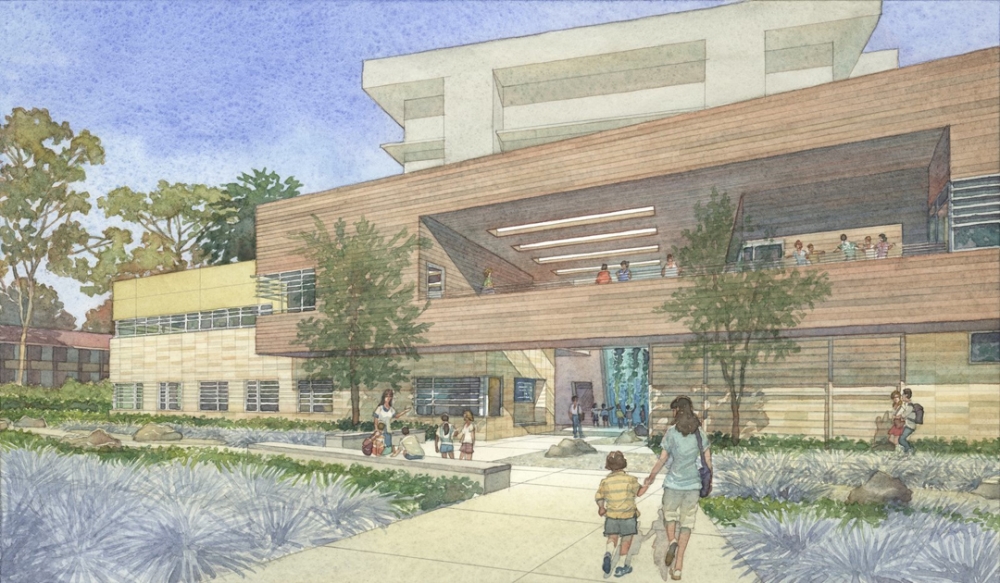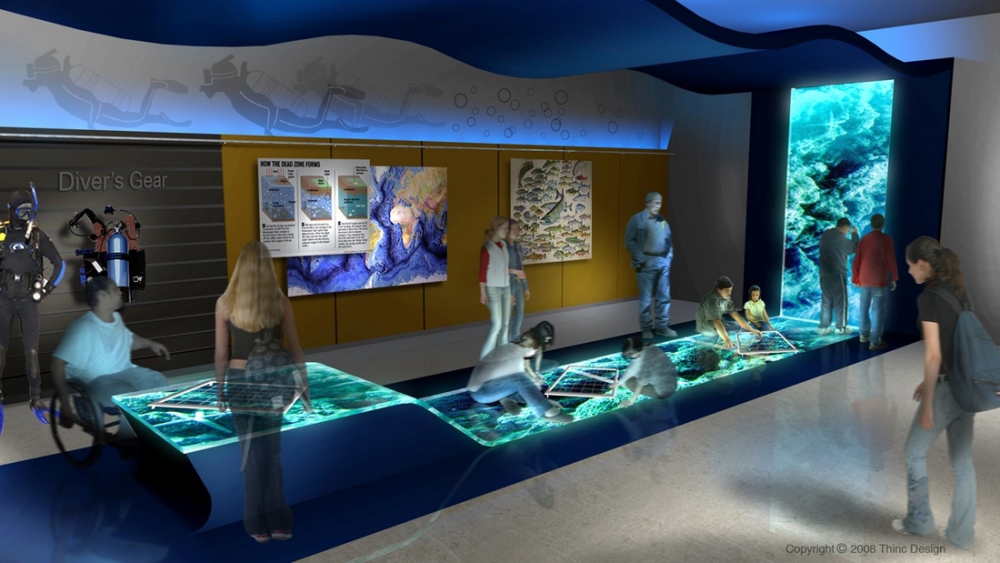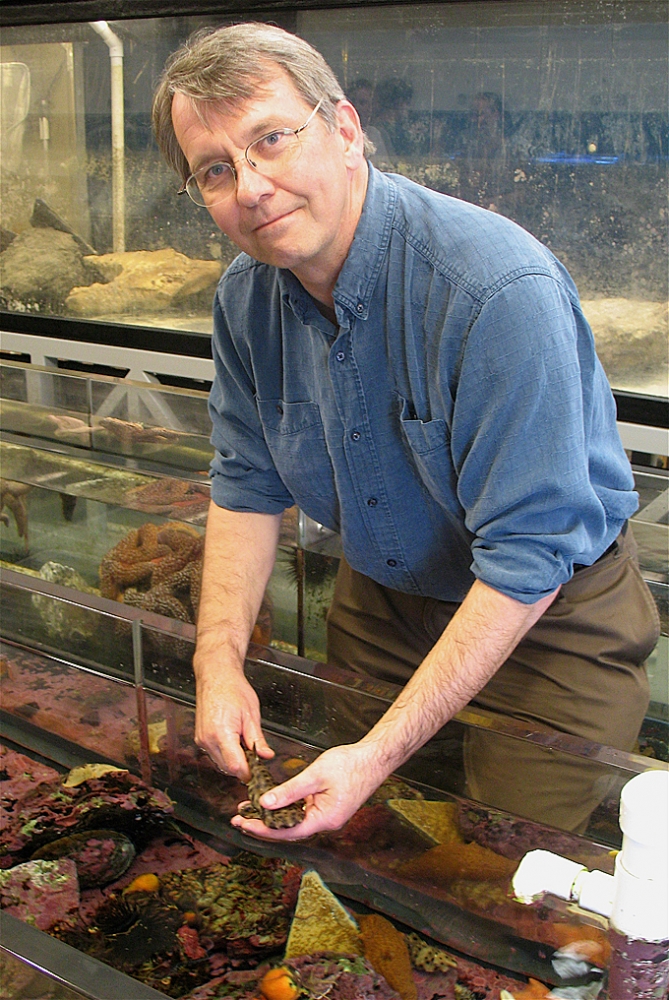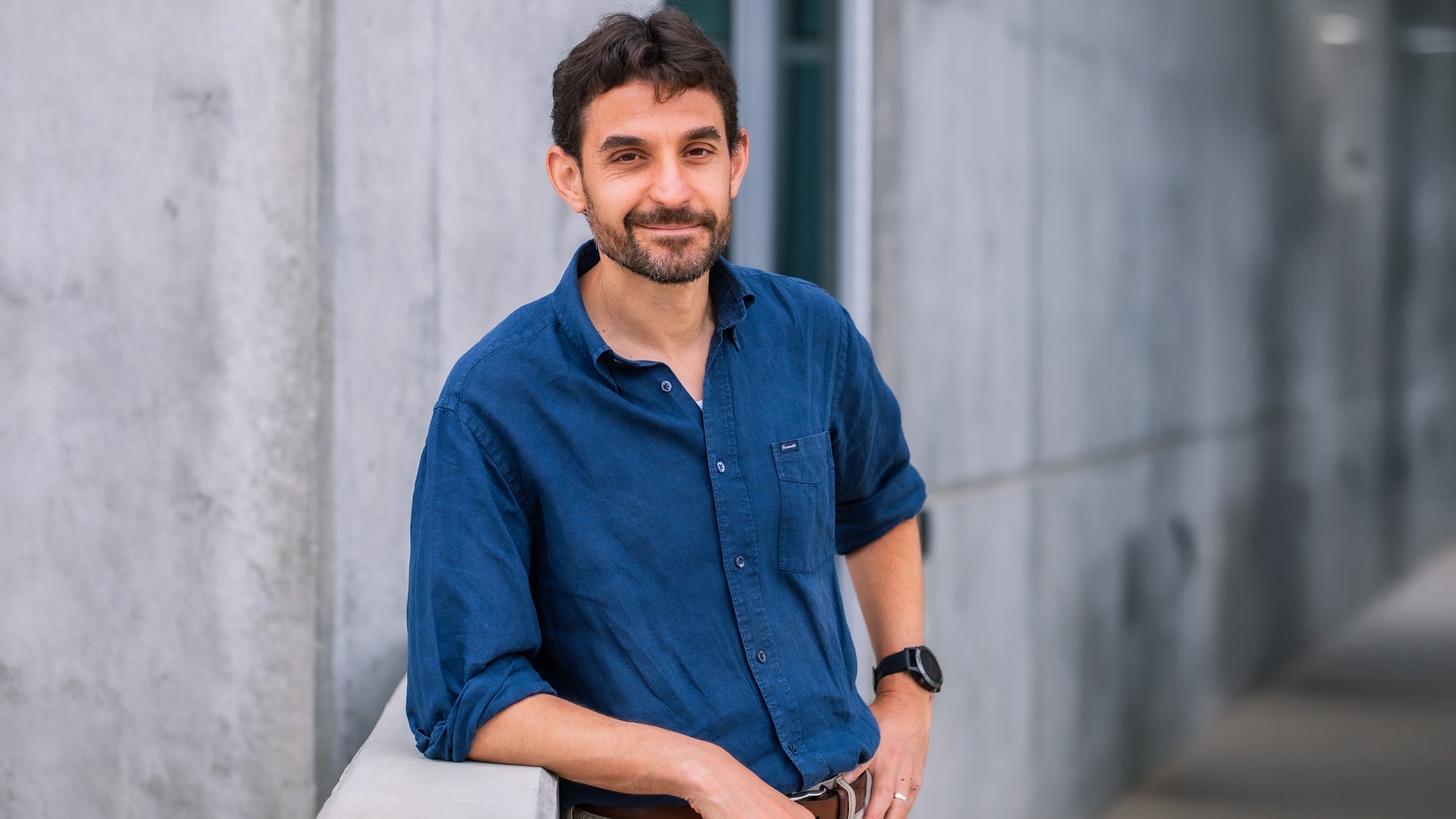
Futuristic Marine Science Teaching Facility to be Built on UCSB Campus


Soon, students from Santa Barbara County and all over the state will have access to a unique, new high-tech, hands-on teaching facility for marine science, located on the UC Santa Barbara campus.
Ground will be broken in August at UCSB for the new Ocean Science Education Building, which will house the Outreach Center for Teaching Ocean Science (OCTOS) and incorporate the educational outreach programs of UCSB's Marine Science Institute (MSI) and the Channel Islands National Marine Sanctuary (CINMS).
Half of the building will house OCTOS and include state-of-the-art interactive exhibits in marine science. The balance of the structure will be home to the CINMS administrative offices.
"OCTOS will open a unique window on the sea," said Steven Gaines, director of MSI, who is currently on sabbatical in New Zealand. "Most people only see the ocean from its surface. At OCTOS we will use technology to submerge students of all ages so they can explore the riches of the ocean and help solve its global challenges."
OCTOS is designed to expand science education for kindergarten through 12th graders. It is expected to fill critical educational needs for the region and state and could not come at a more important time. While scientific issues including climate change and other ocean-related concerns are in the foreground, California's eighth graders have ranked last in the country in the sciences, according to studies by the National Science Foundation. There is also a lack of credentialed science teachers, in the state.
Perched on bluffs above the ocean, the building will provide a home for a cutting-edge partnership between the federal government, UCSB, and private philanthropy. With educational programs and administrative offices located in the same building, the university and the Channel Islands National Marine Sanctuary will operate synergistically in their mutual mission of education and public service.
CINMS is part of the federal National Oceanic and Atmospheric Administration (NOAA). Senator Diane Feinstein and Representative Lois Capps were instrumental in obtaining the funds on behalf of NOAA to support the building and all of its components.
UC Santa Barbara is seeking private philanthropy to provide the balance of support for the building and its outreach programs. "Supporting the Ocean Science Education Building and OCTOS is a great opportunity for philanthropists to be in on the ground floor of a very important project," said Gay Larsen, development director of MSI. "We hope that an individual or family in the area will want to put their name on the facility, and thereby help to light up the scientific imaginations of generations of students to come. The completion of OCTOS largely depends on this philanthropy."
"Science and education have not been well-supported by the state in recent years," said Mark Brzezinski, acting director of MSI. "K through 12 schools struggle to provide a quality experience for their students, and we're very proud that we can help them fill the gap in the sciences –– marine science in particular."
OCTOS will also provide opportunities for undergraduate and graduate students, who will serve as docents, to learn about teaching science, as it's all part of an a program called Oceans2Classrooms.
"Another constituency that will be served by OCTOS is the Gevirtz Graduate School of Education," added Brzezinski. "We will certainly be partnering with them to help produce the next generation of science teachers."
MSI, which ranks among the top five marine study institutes in the country, has for five years been providing an exciting educational program called The REEF, or Research, Experience, Education Facility. The REEF includes a touch tank, an educational beach experience and tours of a marine lab. as well. In addition, The Mobile REEF program brings the ocean to those classrooms that cannot visit the campus. More than 20,000 elementary through high school students experience REEF programs each year, and such outreach has been part of MSI's mission for two decades. MSI officials project that OCTOS programs are expected to serve 40,000 students annually.
The new facility will include and enhance the REEF experience in a variety of ways. This program is not a traditional aquarium, but rather an experiential teaching tool that is designed to allow young students to perform scientific research, and experience the essence of what it is to be a scientist.
Exhibits will include:
The Virtual Dive: Using video and still photography, this interactive exhibit will allow students to participate in experiments that have been reproduced for the exhibit. Included will be studies of coral reefs, kelp forests, and sandy beaches. Without getting into scuba gear, students can experience looking at the ocean floor in three dimensions.
"What students experience is the same environment that real-world researchers encounter," Brzezinski said. "Students can collect the same kind of data and analyze it, to experience scientific discovery first hand in a virtual environment."
The Magic Planet: This high-tech representation of the Earth is several feet wide and can project many different scenarios. For example, when students study a coral reef in the Virtual Dive, outbreaks of actual coral bleaching can be projected across the planet. The Magic Planet has the capacity to show how patterns of ocean currents evolve over time, in motion. Various global warming scenarios can be projected, as well as El Niño and other major climate perturbations.
Immersive Digital Theater: In an intimate, 30-seat theater, students will be able to interact via video with students in other parts of the world, who are also online. They can do interactive activities such as drive remotely operated vehicles underwater –– even though the vehicles may be hundreds of miles away. Data can be fed in real time to the students in the theater, and they can interact with researchers underwater, thus having a two-way communication to better understand the research they are witnessing.
The Study Aquarium: This laboratory provides an exhibit and study area for 30 students and five adults to observe and study living organisms as well as prepared specimens. This facility offers many possibilities for close examination of marine algae, plants and animals, and will be connected to the Virtual Dive and the Magic Globe.
"This sort of hands-on immersive experience allows students to witness what the world beneath the sea looks like, to learn how what goes on there affects their lives, and to understand how we can all be better stewards of this fantastic place," said Brzezinski. "Students will learn what marine science is all about and what it is like to be a marine scientist.
They can apply what they've learned in their classrooms, rather than just dealing with facts and figures.
That's the kind of inspirational learning that we will capture at OCTOS."
Related Links
Marine Science Institute
Channel Island National Marine Sanctuary
Mark Brzezinski
Steve Gaines



